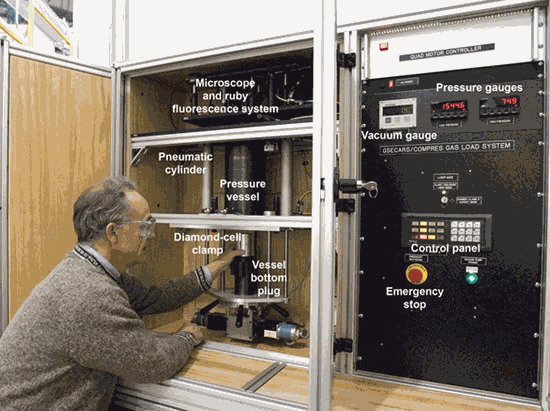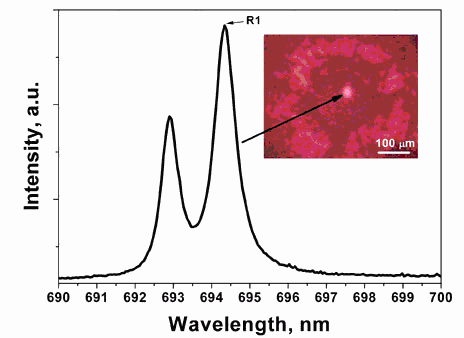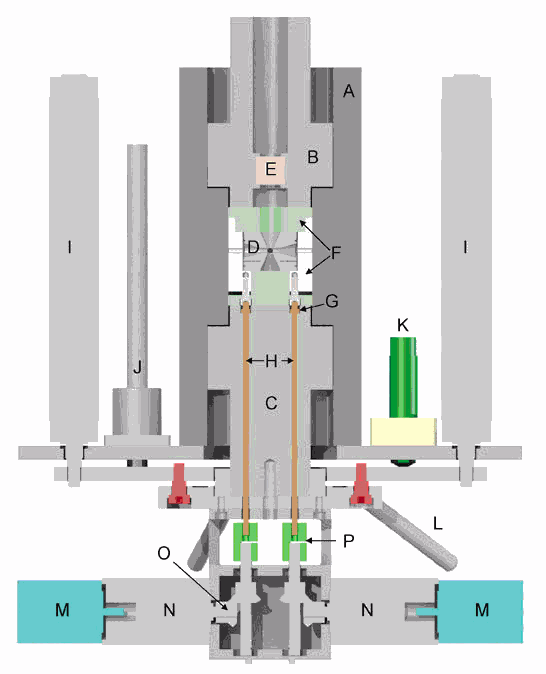The diamond anvil cell (DAC) is the most commonly used device for obtaining static high pressures above 3 GPa. Experiments in the DAC are frequently performed at the APS, in particular at GSECARS (Sector 13), HP-CAT (Sector 16), and at XOR sectors 1 and 3. In order to have the sample in the DAC be subject to a quasi-hydrostatic pressure it is necessary to surround the sample with a pressure medium that is relatively weak, is chemically inert to the sample, is optically and x-ray transparent, and which does not produce a strong x-ray diffraction signal. The rare gases are the preferred pressure media for pressures above approximately 10 GPa; helium and neon are ideal because of their low x-ray scattering cross sections and low strength, which minimizes the lattice strain in the sample. However, it is necessary to load the gases into the DAC at a high gas pressure. If the gas pressure is 100-200 MPa, then the density is comparable to the liquid at room pressure. Such systems operate by loading a DAC into a pressure vessel, pressurizing the vessel, and then remotely sealing the DAC, trapping the high-pressure gas and the sample inside the gasket hole between the two diamonds. Because no gas-loading system was available at the APS, the COMPRES (an NSF-funded consortium for high-pressure research) and GSECARS designed and built one (Fig. 1).
Since the APS and GSECARS are national user facilities, and have hundreds of high-pressure users from dozens of institutions, GSECARS wanted to build a system that could be safely operated by users with appropriate training. There are also many different DAC designs in use by the scientists who use APS and GSECARS beamlines. As a result, the following goals were developed when designing and building the system:
• The ability to load many kinds of DACs. A closure mechanism (motor-driven screws) closes a clamping device, which in turn clamps the DAC shut. By not turning the tightening screws on the DAC directly, it is simple to accommodate different DAC designs; in many cases, they just require different spacers, and in the worst case a different clamp design.
• An optical access in order to view the cell while loading. This allows one to see when the diamonds contact the gasket as the cell is closed. It also allows an online ruby fluorescence system for directly measuring the pressure as the cell is closed (Fig. 2).
• A vacuum pump to clean the system before loading the gas.
• The ability to have no electrical parts except pressure transducers in the cabinet enclosing the high pressure system. This allows flammable gas operation (e.g., hydrogen) in the future.
• Easy to operate safely, thanks to the use of air-driven valves, safety interlocks, and computer control.
The system received a detailed pressure safety review from the APS and Argonne, followed by approval to operate. At the time of writing, beamline staff at GSECARS had loaded more than 20 cells, with nearly 100% success rate. Two types of cells have been loaded with He or Ne at pressures of about 25,000 PSI. The ability to measure the pressure as the stepper motors are driven to close the cell clamp has proven to be invaluable. The operator simply rotates the stepper motors, closing the cell clamp, until the pressure measured with the ruby luminescence system begins to increase, and then continues to close it until a desired pressure is reached, typically 1-2 GPa. Once this pressure is reached, the pressure vessel (Fig. 3) is vented and the cell is removed. The screws on the diamond cell itself are then tightened, using an Allen wrench that passes through access holes in the top of the cell clamp.
A GSECARS user, Steve Jacobson from Northwestern University, collected data sets on single crystals of MgO loaded with the system. The data were excellent, showing a very smooth compression curve up to 110 GPa (1.2-million atmospheres).
It is expected several additional cell types will be accommodated in the next few months. A new cell clamp to load panoramic DACs will be built, and GSECARS is currently accepting and prioritizing requests to build cell holders for other types of DACs. The system is being upgraded for rapid switching between He and Ne, and for convenient use of other gases. Finding a vendor who can supply copies of this system commercially is a priority, because at least six other laboratories have expressed an interest in obtaining one.
Contact: Mark Rivers ([email protected]),Vitali Prakapenka ([email protected]), Clayton Pullins ([email protected])
This research was partially supported by COMPRES, the Consortium for Materials Properties Research in Earth Sciences under NSF Cooperative Agreement EAR 06-49658. It was also supported by GeoSoilEnviroCARS (Sector 13) and the APS. GeoSoilEnviroCARS is supported by the National Science Foundation - Earth Sciences (EAR-0622171) and Department of Energy - Geosciences (DE-FG02-94ER14466). Use of the Advanced Photon Source was supported by the U.S. Department of Energy, Office of Science, Office of Basic Energy Sciences, under contract no. DE-AC02-06CH11357.



